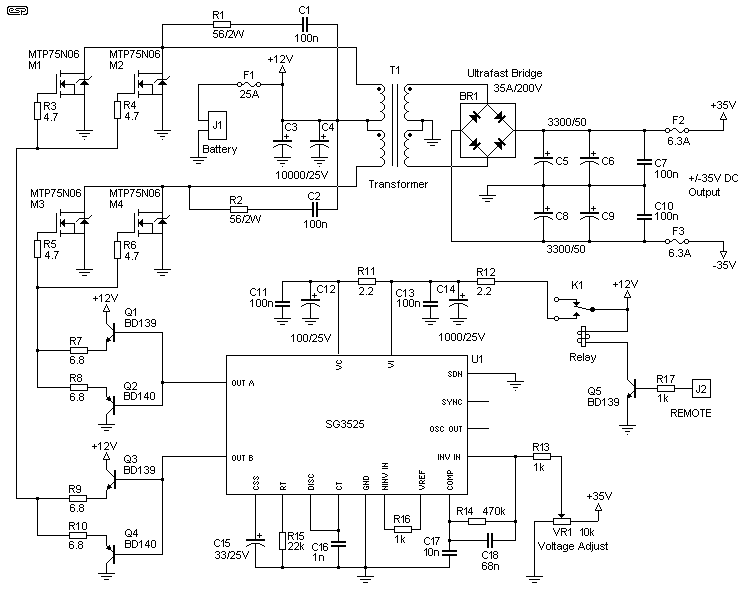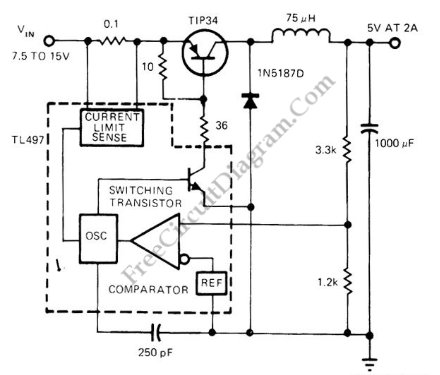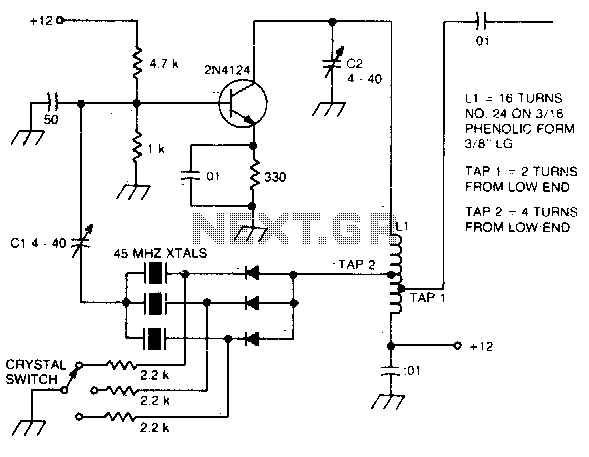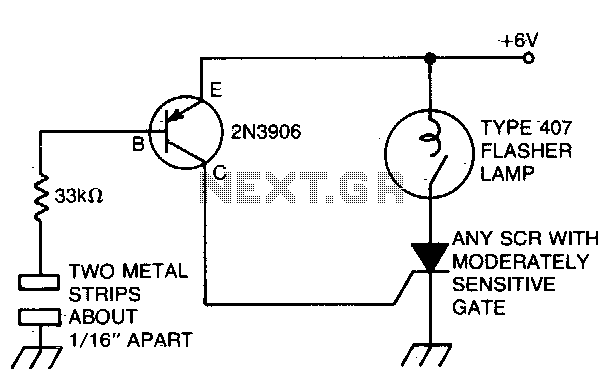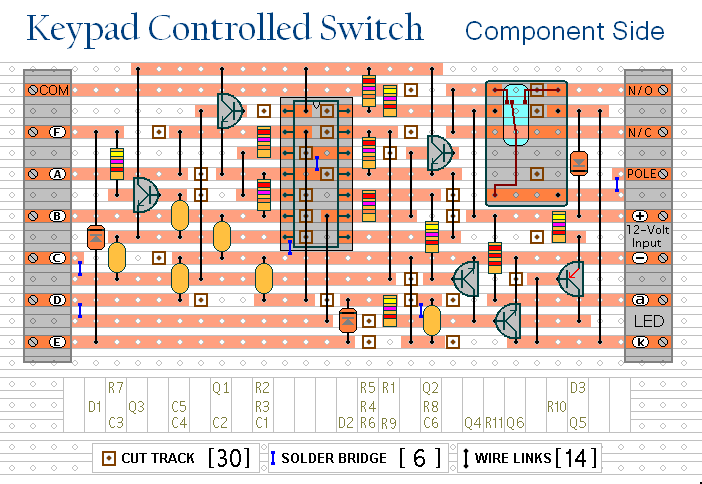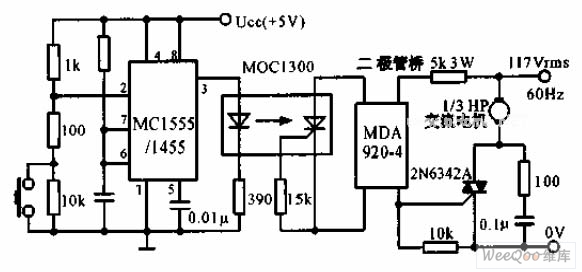
Clap-Controlled Switch

This circuit can switch two or more devices on and off in response to a series of rapid handclaps. The claps are picked up by an electret microphone.
The circuit operates by utilizing an electret microphone, which serves as the primary sensor for detecting sound, specifically the sound of handclaps. When a handclap occurs, the microphone converts the acoustic signal into an electrical signal. This signal is then processed by an amplifier stage to enhance its strength and clarity, ensuring that even faint claps can trigger the system.
The output from the amplifier is fed into a microcontroller or a dedicated sound detection circuit, which is programmed to recognize the distinct pattern of rapid clapping. The microcontroller analyzes the input signal and determines when the threshold for a 'clap' has been met. Once the required number of claps is detected within a specific timeframe, the microcontroller sends a signal to a relay or transistor switch.
The relay or transistor acts as the control element for the devices being switched. When activated, it can turn on or off multiple devices, such as lights or appliances, depending on the configuration of the circuit. This allows for versatile applications in home automation or interactive installations.
Power supply considerations for the circuit include ensuring that the electret microphone, amplifier, microcontroller, and output devices all operate within their specified voltage and current ratings. A suitable power source, such as a battery or an AC adapter, should be employed to provide stable operation.
In summary, this handclap-activated circuit provides a convenient and innovative method for controlling multiple devices through simple sound detection, making it an engaging solution for various electronic applications.This circuit can switch two or more devices on and off in response to a series of rapid handclaps. The claps are picked up by an electret microphone and a.. 🔗 External reference
The circuit operates by utilizing an electret microphone, which serves as the primary sensor for detecting sound, specifically the sound of handclaps. When a handclap occurs, the microphone converts the acoustic signal into an electrical signal. This signal is then processed by an amplifier stage to enhance its strength and clarity, ensuring that even faint claps can trigger the system.
The output from the amplifier is fed into a microcontroller or a dedicated sound detection circuit, which is programmed to recognize the distinct pattern of rapid clapping. The microcontroller analyzes the input signal and determines when the threshold for a 'clap' has been met. Once the required number of claps is detected within a specific timeframe, the microcontroller sends a signal to a relay or transistor switch.
The relay or transistor acts as the control element for the devices being switched. When activated, it can turn on or off multiple devices, such as lights or appliances, depending on the configuration of the circuit. This allows for versatile applications in home automation or interactive installations.
Power supply considerations for the circuit include ensuring that the electret microphone, amplifier, microcontroller, and output devices all operate within their specified voltage and current ratings. A suitable power source, such as a battery or an AC adapter, should be employed to provide stable operation.
In summary, this handclap-activated circuit provides a convenient and innovative method for controlling multiple devices through simple sound detection, making it an engaging solution for various electronic applications.This circuit can switch two or more devices on and off in response to a series of rapid handclaps. The claps are picked up by an electret microphone and a.. 🔗 External reference
